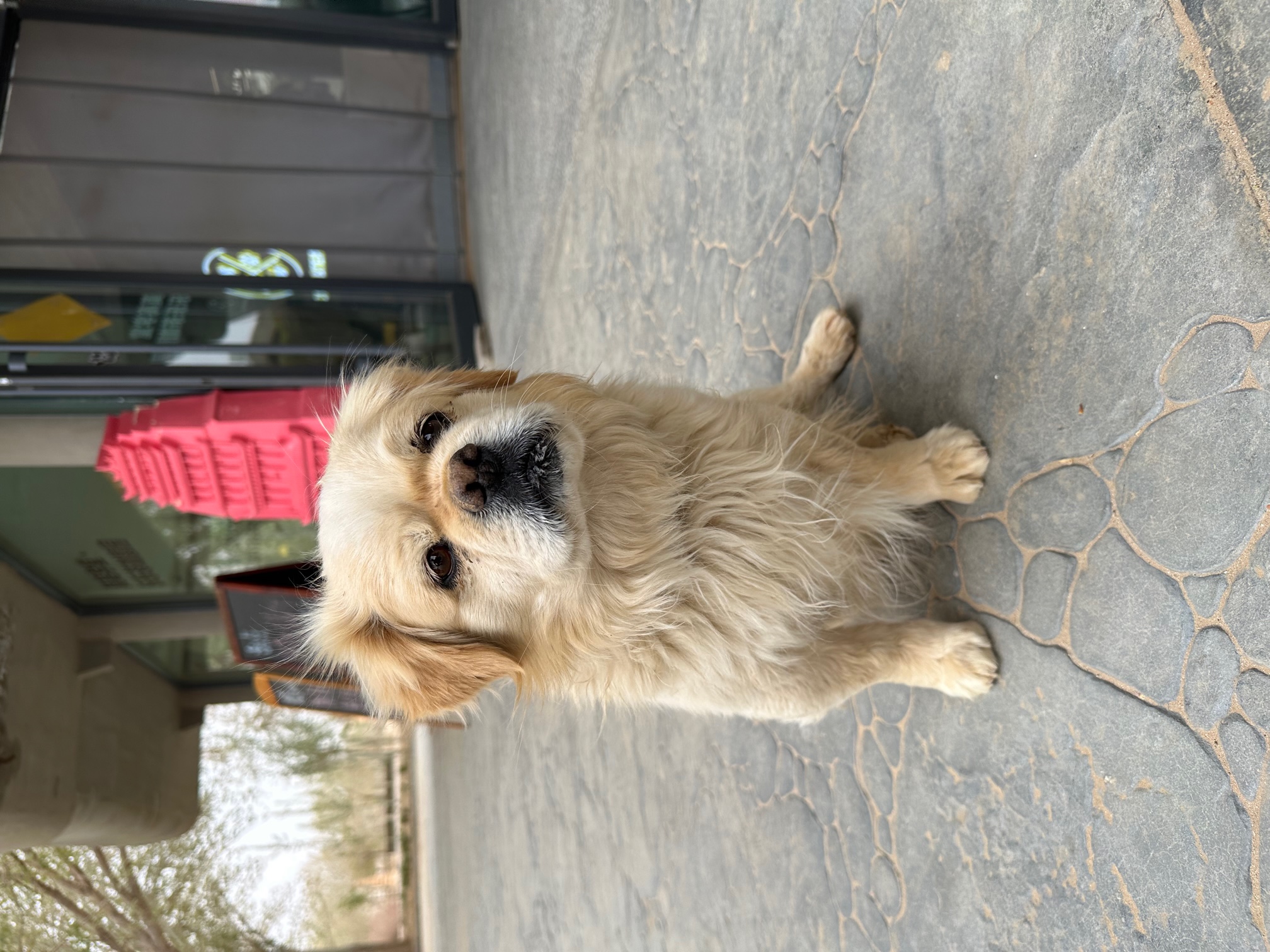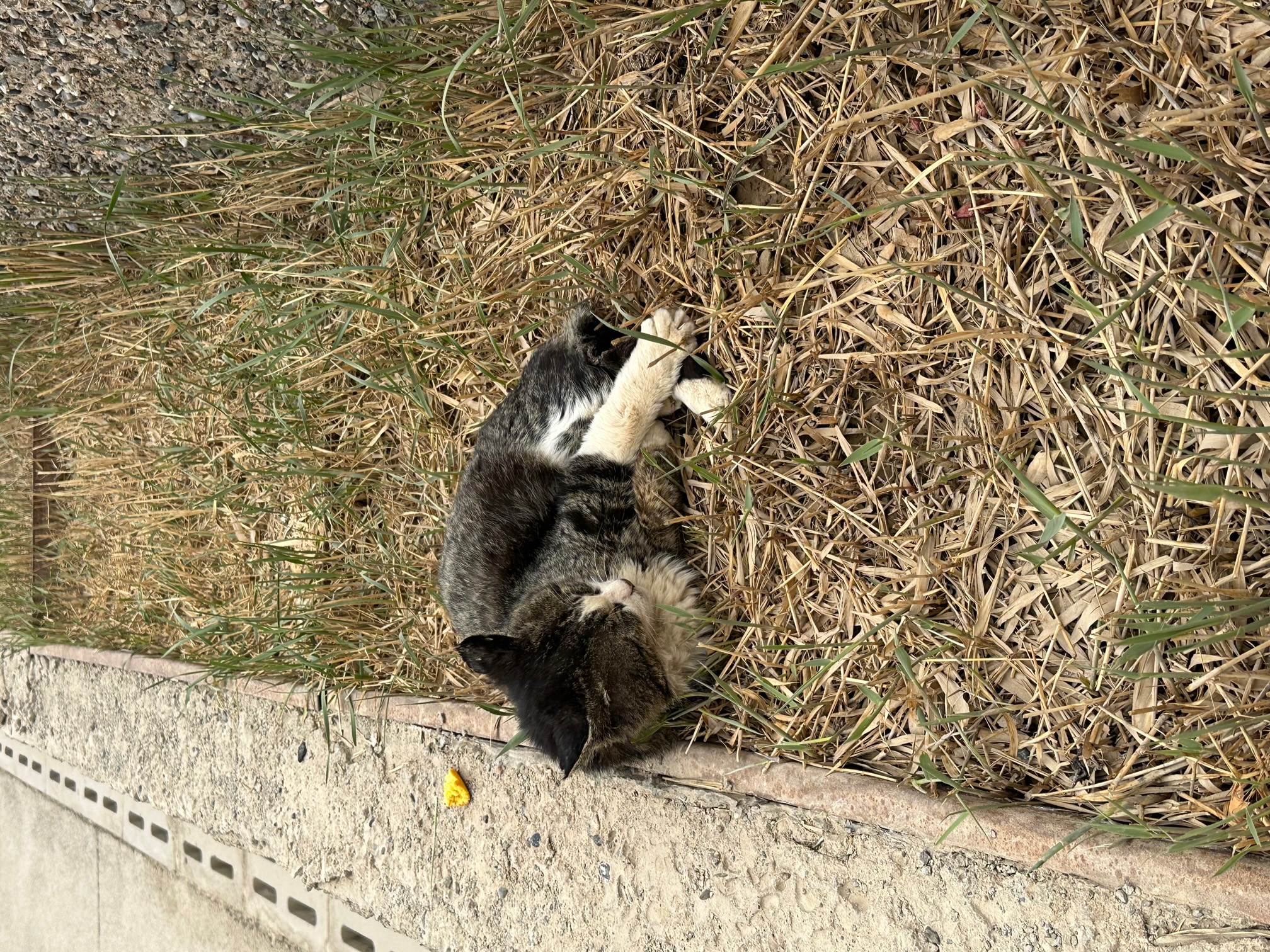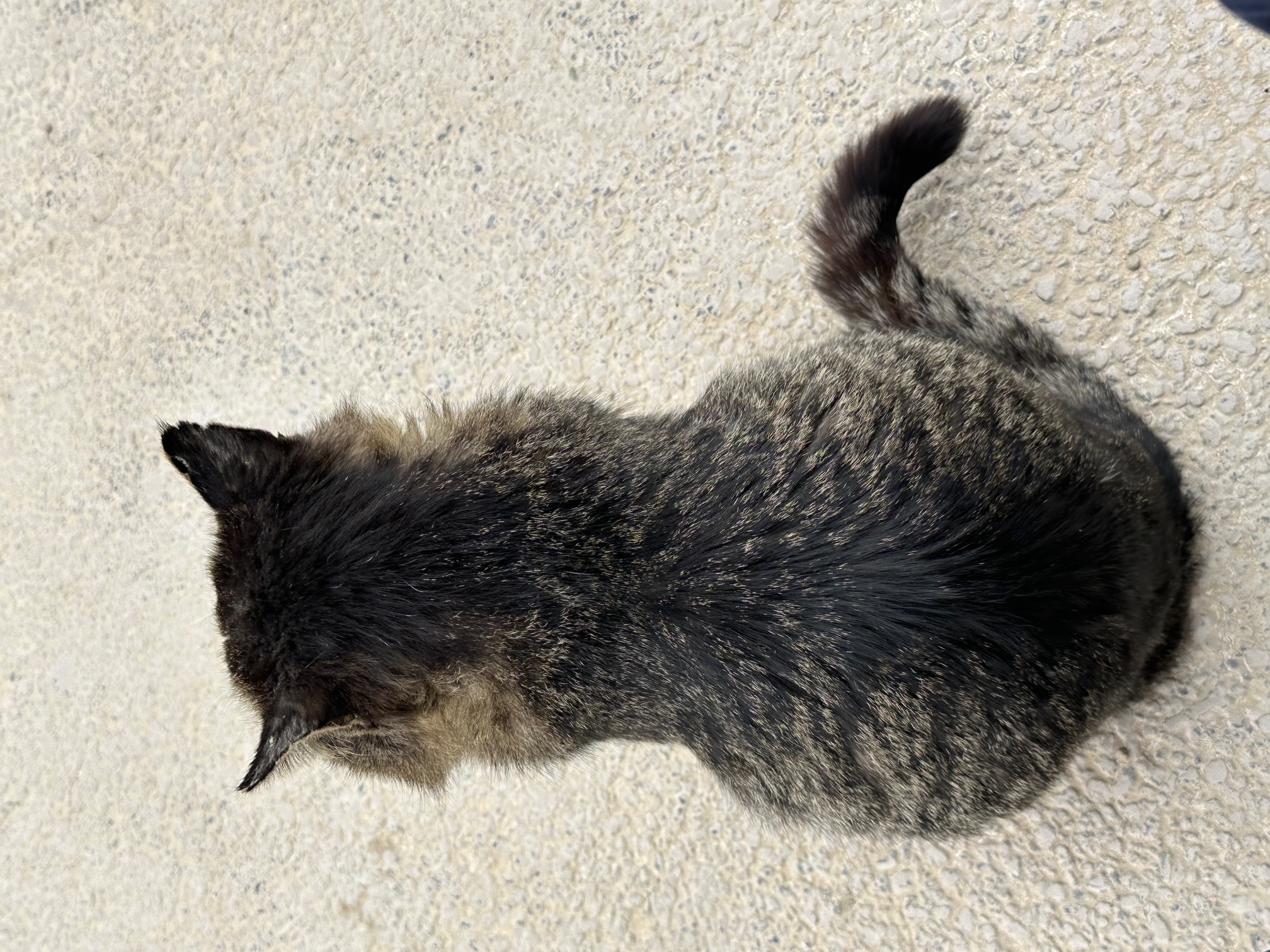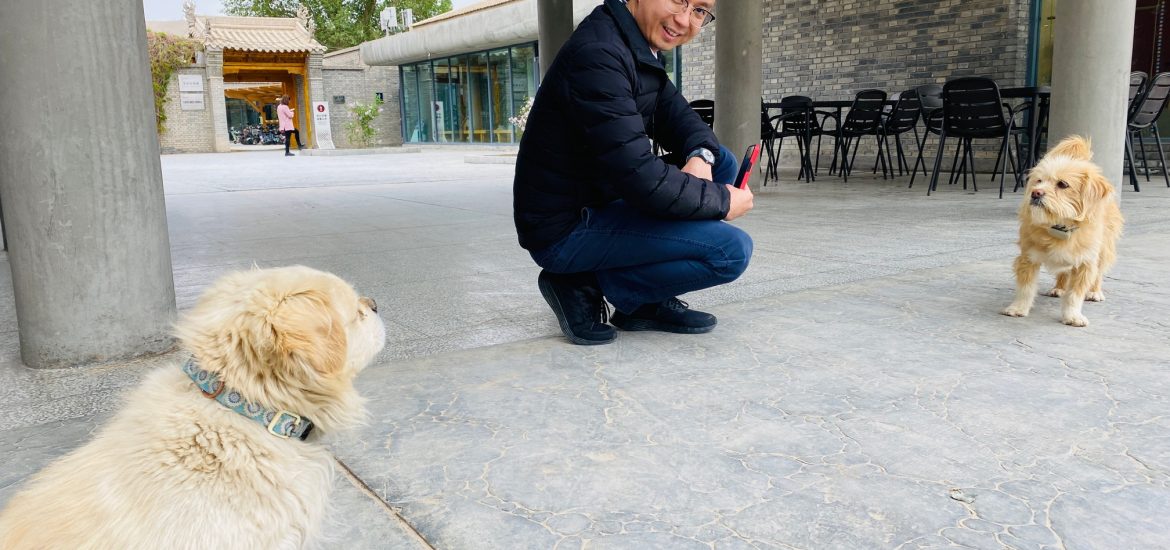There are a total of 1,507 employed staff at the Dunhuang Research Academy (popularly known and hereby referred to as the Dunhuang Academy). This diverse collection of talented individuals works under the supervision of 12 departments. Among these 12 are a “Big Four” of the largest and most influential departments, including the department of cultural promotion, whose head kindly granted me an interview during a two-day visit to Dunhuang this month.
Yet among this group, huge by the standards of any group tasked to protect cultural heritage, there is only one member that has over a million followers on Douyin. She is a little canine called Lele, easily the most popular guardian of Dunhuang. She has an important duty to fulfil each day: hanging around the visitors’ center, running around the public plaza outside of the Mogao Grottoes where tourists gather, and observing people streaming in and out of the caves.

Lele spends more time at Mogao than its full-time docents, researchers, and specialists. Local lore has it that some years ago, a retired, well-intentioned researcher took her back to their house in town. It was foolhardy to assume that Lele would be happier there, however. She fled, attempting a journey of 20 kilometers through the desert back to the Mogao Grottoes. Out of fear that she would get herself injured or run over, she was allowed to stay ever since.
Lele is most certainly the informal mascot of the Mogao Caves, along with an unnamed, lesser-known dog. But at the Yulin Grottoes, two to three hours’ worth of a car ride into the Gobi Desert, there are two feline counterparts that are much less famous. They are friendly if a bit shy, but long for friendship just the same. Yet despite looking in decent health, their fur is matted and dirty, and I did not see anyone paying any attention to them. One of them sidled up to me and stuck close for a few moments. But the felines seem to have accepted that they will not enjoy human contact for long.

The Yulin Grottoes also hold some of the most beautiful Buddhist cave art in China. They share a similar history of antiquity to the ones at Mogao, although there is more of an esoteric element to some of the caves, including some of the most exemplary (and indeed, the only) art from the Western Xia or Tangut Empire.
I could not help finding some parallel between the gulf in fame shared by Lele and the cats at Yulin and the gulf between Mogao’s place in the public consciousness and Yulin’s far less prominent position. Yulin and Mogao are both under the protective supervision and digitization initiatives of the Dunhuang Academy. At Yulin, there were no English-speaking docents, while the team at Mogao at least has several senior staff members in the department of cultural promotion that can speak fluently, allowing the Dunhuang Academy to receive foreign visitors smoothly.

There is also no doubt that the digitization center at Mogao, along with the disciplined army of docents that can handle continuous streams of tourists, have much more exposure to visitor seasons than their counterparts at Yulin. Speaking of these counterparts, in a conversation with a docent at Mogao, it was implied that those working at Yulin tend to be younger and less experienced, and once they move up the ladder, they quickly leave the grottoes for a more prestigious place managed by the Dunhuang Academy. There are few docents with a truly comprehensive knowledge of the entirety of Yulin.
Of course, resources are always limited, and the care and attention given to the Yulin caves are just as meticulous and comprehensive as that at Mogao. What is indisputable is that the latter has entered popular culture as the quintessential Buddhist caves, even more so than complexes elsewhere like Ajanta in India. This has no doubt been due to the well-known history of how the Mogao Caves were developed and rediscovered (starting with how Wang Yuanlu sold scrolls from the Library Cave, Cave 17, to Marc Aurel Stein and a succession of Europeans and Japanese scholars). Meanwhile, there has been no attempt to trace a similar genealogy of discovery at Yulin. Yulin is also more remote, located in Guazhou County, which is at the far end of Gansu Province, the traditional stomping grounds of the Dunhuang Academy.
Both locations are historic sites along the overland Silk Routes that have been so critical to Chinese history, religion, and culture. One day, I hope that Yulin’s visitor center will be as well-resourced and staffed as its Mogao counterpart, and its run-down, somewhat derelict café as comfortable as the bright and cultured one at Mogao. While I am not expecting Yulin to receive the same amount of attention as Mogao, or Guardian Lele for that matter, could the cats at least be given names and made into community mascots as well?


